The GATE way to the Ultimate Victory..
a) The EMR Division under HRD Group of Council of Scientific & Industrial Research (CSIR) provide CSIR Research Fellowships and Associateships to bright young men and women for training in methods of research under the expert guidance of faculty members/scientists working in University Departments/Institutes of National Importance/National Laboratories and Institutes of CSIR in various fields of Science & Technology and Medical Sciences. List of CSIR Laboratories is at Annexure-I.
b) The CSIR Fellowships/Associateships are tenable in Universities/IITs/Post-Graduate Colleges/ Government Research Establishments including those of CSIR, R&D establishments of recognized public or private sector, industrial firms and other recognized institutions. However, CSIR reserves the right to determine the place best suited to provide necessary facilities in the area of science and technology in which the awardee is to specialize.
c) The CSIR Fellowships / Associatships are tenable in India. Only bonafide Indian citizens, residing in India are eligible for the award of research Fellowship/Associateships. The programme is aimed at National Human Resource Development for S & T.
NET PHYSICAL SCIENCE
| S. No | PART 'A' (CORE) |
|---|---|
| 1 | Mathematical Methods of Physics: Dimensional analysis. Vector algebra and vector calculus. Linear algebra, matrices, Cayley-Hamilton Theorem. Eigenvalues and eigenvectors. Linear ordinary differential equations of first & second order,Special functions (Hermite, Bessel, Laguerre and Legendre functions). Fourier series, Fourier and Laplace transforms. Elements of complex analysis, analytic functions; Taylor & Laurent series; poles, residues and evaluation of integrals. Elementary probability theory, random variables, binomial, Poisson andnormal distributions. Central limit theorem. |
| 2 | Classical Mechanics: Newton's laws. Dynamical systems, Phase space dynamics, stability analysis. Central force motions. Two body Collisions - scattering in laboratory and Centre of mass frames. Rigid body dynamicsmoment of inertia tensor. Non-inertial frames and pseudoforces. Variational principle. Generalized coordinates. Lagrangian and Hamiltonian formalism and equations of motion. Conservation laws and cyclic coordinates. Periodic motion: small oscillations, normal modes. Special theory of relativityLorentz transformations, relativistic kinematics and mass-energy equivalence.. |
| 3 | Electromagnetic Theory: Electrostatics: Gauss's law and its applications, Laplace and Poisson equations, boundary value problems. Magnetostatics: Biot-Savart law, Ampere's theorem. Electromagnetic induction. Maxwell's equations in free space and linear isotropic media; boundary conditions on the fields at interfaces. Scalar and vector potentials, gauge invariance. Electromagnetic waves in free space. Dielectrics and conductors. Reflection and refraction, polarization, Fresnel 's law, interference, coherence, and diffraction. Dynamics of charged particles in static and uniform electromagnetic fields. |
| 4 | Quantum Mechanics: Wave-particle duality. Schrödinger equation (time-dependent and time-independent). Eigenvalue problems (particle in a box, harmonic oscillator, etc.). Tunneling through a barrier. Wave-function in coordinate and momentum representations. Commutators and Heisenberg uncertainty principle. Dirac notation for state vectors. Motion in a central potential: orbital angular momentum, angular momentum algebra, spin, addition of angular momenta; Hydrogen atom. Stern-Gerlach experiment. Timeindependent perturbation theory and applications. Variational method. Time dependent perturbation theory and Fermi's golden rule, selection rules. Identical particles, Pauli exclusion principle, spin-statistics connection. |
| 5 | Thermodynamic and Statistical Physics: Laws of thermodynamics and their consequences. Thermodynamic potentials, Maxwell relations, chemical potential, phase equilibria. Phase space, micro- and macro-states. Micro-canonical, canonical and grand-canonical ensembles and partition functions. Free energy and its connection with thermodynamic quantities. Classical and quantum statistics. Ideal Bose and Fermi gases. Principle of detailed balance. Blackbody radiation and Planck's distribution law. |
| 6 | Electronics and Experimental Methods: Semiconductor devices (diodes, junctions, transistors, field effect devices, homo- and hetero-junction devices), device structure, device characteristics, frequency dependence and applications. Opto-electronic devices (solar cells, photo-detectors, LEDs). Operational amplifiers and their applications. Digital techniques and applications (registers, counters, comparators and similar circuits). A/D and D/A converters. Microprocessor and microcontroller basics.Data interpretation and analysis. Precision and accuracy. Error analysis, propagation of errors. Least squares fitting. |
| S. No | PART 'B' (ADVANCED) |
|---|---|
| 1 | Mathematical Methods of Physics: DGreen's function. Partial differential equations (Laplace, wave and heat equations in two and three dimensions). Elements of computational techniques: root of functions, interpolation, extrapolation,integration by trapezoid and Simpson's rule, Solution of first order differential equation using RungeKutta method. Finite difference methods. Tensors. Introductory group theory: SU(2), O(3). |
| 2 | Classical Mechanics: Dynamical systems, Phase space dynamics, stability analysis. Poisson brackets and canonical transformations. Symmetry, invariance and Noether's theorem. Hamilton-Jacobi theory. |
| 3 | Electromagnetic Theory: Dispersion relations in plasma. Lorentz invariance of Maxwell's equation. Transmission lines and wave guides. Radiation- from moving charges and dipoles and retarded potentials. |
| 4 | Quantum Mechanics: Spin-orbit coupling, fine structure. WKB approximation. Elementary theory of scattering: phase shifts, partial waves, Born approximation. Relativistic quantum mechanics: Klein-Gordon and Dirac equations. Semi-classical theory of radiation. |
| 5 | Thermodynamic and Statistical Physics: First- and second-order phase transitions. Diamagnetism, paramagnetism, and ferromagnetism. Ising model. Bose-Einstein condensation. Diffusion equation. Random walk and Brownian motion.Introduction to nonequilibrium processes. |
| 6 | Electronics and Experimental Methods: Linear and nonlinear curve fitting, chi-square test. Transducers (temperature, pressure/vacuum, magnetic fields, vibration, optical, and particle detectors). Measurement and control. Signal conditioning and recovery. Impedance matching, amplification (Op-amp based, instrumentation amp, feedback), filtering and noise reduction, shielding and grounding. Fourier transforms, lock-in detector, box-car integrator, modulation techniques.High frequency devices (including generators and detectors). |
| 7 | Atomic & Molecular Physics: Quantum states of an electron in an atom. Electron spin. Spectrum of helium and alkali atom. Relativistic corrections for energy levels of hydrogen atom, hyperfine structure and isotopic shift, width of spectrum lines, LS & JJ couplings. Zeeman, Paschen-Bach & Stark effects. Electron spin resonance. Nuclear magnetic resonance, chemical shift. Frank-Condon principle. Born-Oppenheimer approximation.Electronic, rotational, vibrational and Raman spectra of diatomic molecules, selection rules. Lasers: spontaneous and stimulated emission, Einstein A & B coefficients. Optical pumping, population inversion, rate equation. Modes of resonators and coherence length. |
| 8 | Condensed Matter Physics: Bravais lattices. Reciprocal lattice. Diffraction and the structure factor. Bonding of solids. Elastic properties, phonons, lattice specific heat. Free electron theory and electronic specific heat. Response and relaxation phenomena. Drude model of electrical and thermal conductivity. Hall effect and thermoelectric power. Electron motion in a periodic potential, band theory of solids: metals, insulators and semiconductors. Superconductivity: type-I and type-II superconductors. Josephson junctions. Superfluidity. Defects and dislocations. Ordered phases of matter: translational and orientational order,kinds of liquid crystalline order. Quasi crystals. |
| 9 | Nuclear and Particle Physics: Basic nuclear properties: size, shape and charge distribution, spin and parity. Binding energy, semiempirical mass formula, liquid drop model. Nature of the nuclear force, form of nucleon-nucleon potential, charge-independence and charge-symmetry of nuclear forces. Deuteron problem. Evidence of shell structure, single-particle shell model, its validity and limitations. Rotational spectra. Elementary ideas of alpha, beta and gamma decays and their selection rules. Fission and fusion. Nuclear reactions,reaction mechanism, compound nuclei and direct reactions.Classification of fundamental forces. Elementary particles and their quantum numbers (charge, spin, parity, isospin, strangeness, etc.). Gellmann-Nishijima formula. Quark model, baryons and mesons. C, P, and T invariance. Application of symmetry arguments to particle reactions. Parity non-conservation in weak interaction. Relativistic kinematics.. |
NET PHYSICAL SCIENCE
| S. No | PART 'B' (ADVANCED) |
|---|---|
| 1 | Mathematical Methods of Physics: DGreen's function. Partial differential equations (Laplace, wave and heat equations in two and three dimensions). Elements of computational techniques: root of functions, interpolation, extrapolation,integration by trapezoid and Simpson's rule, Solution of first order differential equation using RungeKutta method. Finite difference methods. Tensors. Introductory group theory: SU(2), O(3). |
| 2 | Classical Mechanics: Dynamical systems, Phase space dynamics, stability analysis. Poisson brackets and canonical transformations. Symmetry, invariance and Noether's theorem. Hamilton-Jacobi theory. |
| 3 | Electromagnetic Theory: Dispersion relations in plasma. Lorentz invariance of Maxwell's equation. Transmission lines and wave guides. Radiation- from moving charges and dipoles and retarded potentials. |
| 4 | Quantum Mechanics: Spin-orbit coupling, fine structure. WKB approximation. Elementary theory of scattering: phase shifts, partial waves, Born approximation. Relativistic quantum mechanics: Klein-Gordon and Dirac equations. Semi-classical theory of radiation. |
| 5 | Thermodynamic and Statistical Physics: First- and second-order phase transitions. Diamagnetism, paramagnetism, and ferromagnetism. Ising model. Bose-Einstein condensation. Diffusion equation. Random walk and Brownian motion.Introduction to nonequilibrium processes. |
| 6 | Electronics and Experimental Methods: Linear and nonlinear curve fitting, chi-square test. Transducers (temperature, pressure/vacuum, magnetic fields, vibration, optical, and particle detectors). Measurement and control. Signal conditioning and recovery. Impedance matching, amplification (Op-amp based, instrumentation amp, feedback), filtering and noise reduction, shielding and grounding. Fourier transforms, lock-in detector, box-car integrator, modulation techniques.High frequency devices (including generators and detectors). |
| 7 | Atomic & Molecular Physics: Quantum states of an electron in an atom. Electron spin. Spectrum of helium and alkali atom. Relativistic corrections for energy levels of hydrogen atom, hyperfine structure and isotopic shift, width of spectrum lines, LS & JJ couplings. Zeeman, Paschen-Bach & Stark effects. Electron spin resonance. Nuclear magnetic resonance, chemical shift. Frank-Condon principle. Born-Oppenheimer approximation.Electronic, rotational, vibrational and Raman spectra of diatomic molecules, selection rules. Lasers: spontaneous and stimulated emission, Einstein A & B coefficients. Optical pumping, population inversion, rate equation. Modes of resonators and coherence length. |
| 8 | Condensed Matter Physics: Bravais lattices. Reciprocal lattice. Diffraction and the structure factor. Bonding of solids. Elastic properties, phonons, lattice specific heat. Free electron theory and electronic specific heat. Response and relaxation phenomena. Drude model of electrical and thermal conductivity. Hall effect and thermoelectric power. Electron motion in a periodic potential, band theory of solids: metals, insulators and semiconductors. Superconductivity: type-I and type-II superconductors. Josephson junctions. Superfluidity. Defects and dislocations. Ordered phases of matter: translational and orientational order,kinds of liquid crystalline order. Quasi crystals. |
| 9 | Nuclear and Particle Physics: Basic nuclear properties: size, shape and charge distribution, spin and parity. Binding energy, semiempirical mass formula, liquid drop model. Nature of the nuclear force, form of nucleon-nucleon potential, charge-independence and charge-symmetry of nuclear forces. Deuteron problem. Evidence of shell structure, single-particle shell model, its validity and limitations. Rotational spectra. Elementary ideas of alpha, beta and gamma decays and their selection rules. Fission and fusion. Nuclear reactions,reaction mechanism, compound nuclei and direct reactions.Classification of fundamental forces. Elementary particles and their quantum numbers (charge, spin, parity, isospin, strangeness, etc.). Gellmann-Nishijima formula. Quark model, baryons and mesons. C, P, and T invariance. Application of symmetry arguments to particle reactions. Parity non-conservation in weak interaction. Relativistic kinematics.. |
| Title | testing |
|---|---|
| Author | Admin Mediacity |
| Publisher | uv |
| Edition | 2023 |
The GATE WAY to the Ultimate Victory..
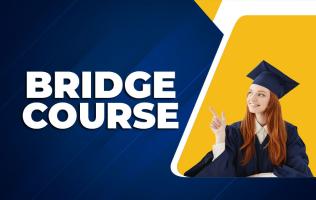
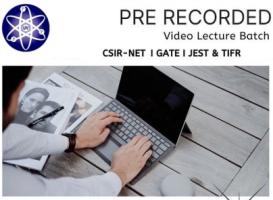
* Students free to watch the videos according to their flexibility.
* 24 Hours Validity for each Class.
* Class Video will be available in HD or Full HD Formats.
* This Package does not Contain Any Exam Series, BUY TEST Series Package separately.
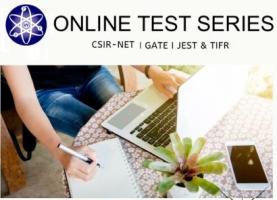
Test series are provided to the students on our own UV Online Exam Platform to check themselves from time to time after completion of a part of the syllabus and rectify themselves.
* Chapter Wise Tests
* Subject Wise Tests
* Semi Grand Tests
* Grand Tests
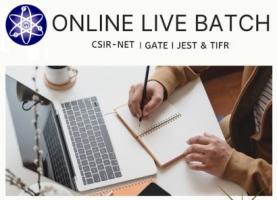
* Single Package contains LIVE Classes of all Subjects (Total 9).
* Student can watch LIVE Class again within 24 Hours
* Need to BUY TEST Series Package Separately, which is mandatory.
* Mon to Sun: 4:30pm to 8:30pm
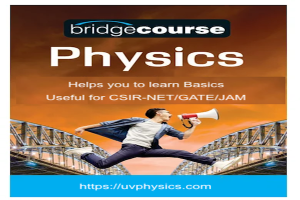
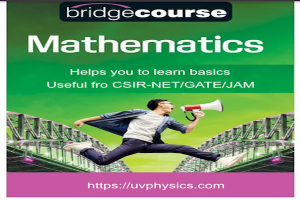
Bridge Course of Mathematics useful to improve Problem solving skills in Physics.
Add To Cart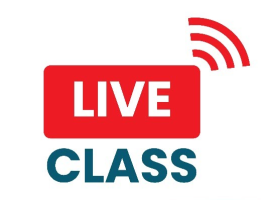

Test series are provided to the students on our own UV Online Exam Platform to check themselves from time to time after completion of a part of the syllabus and rectify themselves.
Add To CartCongratulations to our UVions for proving UV is the Best...
Great Physicist whose contribution will be there in our hearts for ever..

However difficult life may seem, there is always something you can do, and succeed at. It matters that you don't just give up
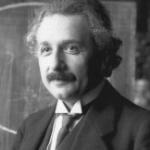
Everybody is a genius. But if you judge a fish by its ability to climb a tree, it will live its whole life believing that it is stupid.

The task is not to see what has never been seen before, but to think what has never been thought before about what you see everyday.

Success can come to you by courageous devotion to the task lying infront of you. I am the master of my failure.... If I never fail how will I ever learn.

Nothing in life is to be feared, it is only to be understood. Now is the time to understand more, so that we may fear less.
© UV Physics 2024 All rights reserved